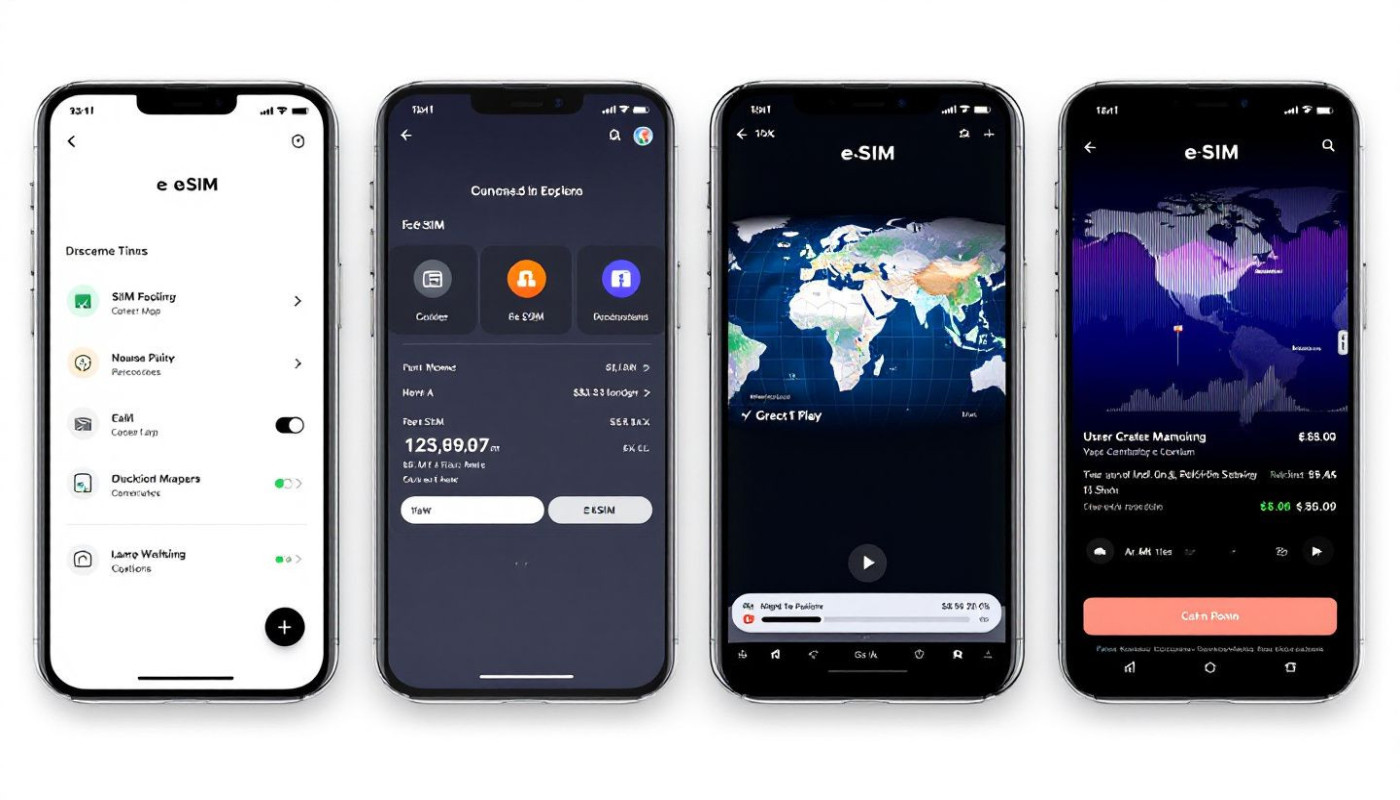Table of contents
Traveling internationally means staying connected, and finding the right eSIM plan can make all the difference in your experience abroad. With a wide range of options and features, navigating the world of eSIMs can seem daunting at first. Discover how to select the most suitable eSIM plan for your travel needs and learn tips to maximize convenience, coverage, and value throughout your journey.
Comparing data allowances
Travelers have a variety of options when selecting a mobile data plan, with eSIM plans offering flexibility through daily, weekly, and monthly data allowances. Each plan type caters to different travel data usage patterns. For short trips or stopovers, daily plans can provide just enough connectivity for essential tasks like messaging and navigation, while weekly and monthly options are suitable for longer stays or frequent data needs such as streaming high-definition video or using cloud-based apps. Assessing personal data usage is crucial: those who rely on streaming or map navigation should monitor past data consumption and consider potential data roaming costs to avoid unexpected charges. It is also wise to check if the eSIM plan implements data throttling, which can slow down internet speeds once a certain data limit is reached. Choosing the right data allowance ensures seamless connectivity abroad and helps avoid overspending on unused or insufficient data.
Evaluating coverage and network quality
Before selecting an eSIM plan for travel, investigating local network providers and their network coverage is vital. Access to reliable travel internet depends on choosing a provider with robust mobile network quality in your destination. Signal strength, which refers to the power of the wireless signal received by your device, directly affects your internet speed and consistency. In some countries, international roaming with certain eSIM travel plans may offer strong connectivity, while in remote or rural areas, coverage can be patchy. By reviewing coverage maps, user reviews, and technical specifications, travelers can avoid potential connectivity issues and ensure stable access to mobile data throughout their journey. A wireless communications specialist regularly highlights the importance of understanding these factors to guarantee a seamless online experience abroad.
Checking compatibility and device support
Before selecting an eSIM plan for travel, verifying eSIM compatibility and device support is vital to ensure global connectivity. Start by determining if your travel phone is eSIM-enabled, as not all models or manufacturers offer this function. Most modern smartphones from leading brands include eSIM, but always consult the official manufacturer specifications or visit the settings menu to look for the eSIM management option. Additionally, check if your device is unlocked, as locked phones might not support eSIM activation with international carriers. Firmware update is another key step, since the latest software often improves eSIM functions and expands network compatibility. Contacting a device compatibility expert can clarify whether your phone will function seamlessly abroad, especially in regions with unique network requirements. Research which international carriers support eSIM on your device by reviewing their published compatibility lists online. These precautions will help avoid connectivity issues and ensure a smooth setup process as you activate your eSIM plan while traveling.
Considering cost and flexibility
When exploring eSIM plans for travel, it is vital to compare different pricing models to ensure the right balance between eSIM cost and travel plan flexibility. Prepaid eSIM options tend to be popular among travelers for their transparent travel SIM pricing and the absence of long-term commitments. Some providers offer pay-as-you-go models, allowing users to purchase only the data or minutes they need, which minimizes unnecessary spending. Watch out for hidden costs such as activation fees, roaming charges, or automatic renewals that may not be immediately obvious. Carefully reading the terms of service and checking for detailed breakdowns of each fee can protect against unexpected expenses.
To maximize flexibility, prioritize plans that allow for easy top-ups and the ability to use the eSIM across multiple countries. This is especially beneficial for those with dynamic itineraries who may cross borders frequently. Some prepaid eSIM plans also provide partial refunds or credit for unused data, adapting to changes in usage patterns or last-minute itinerary changes. By evaluating these features, travelers can secure a cost-effective solution that aligns with their specific needs and avoids the inconvenience of switching SIMs or dealing with high roaming charges during their journey.
Understanding eSIM technology
eSIM technology represents a major shift from the traditional physical SIM cards used in mobile devices. Unlike standard SIM cards, a digital SIM is embedded directly into the device, eliminating the need to physically swap out cards when changing service providers or traveling. This innovation allows for instant activation of new plans, offering travelers seamless travel connectivity across the globe. One standout feature of eSIMs is the capability for profile management, enabling users to store and switch between multiple operator profiles on the same device without hassle. This flexibility significantly benefits those who need to adapt quickly to different networks or data plans while abroad.
Travelers can enjoy the convenience of purchasing and activating data plans remotely, sometimes even before arriving at their destination. Because eSIM technology supports instant activation, users can connect to local networks without waiting in line at a store. This is particularly useful in Europe, where services like Esim france allow for rapid setup of local data plans, maximizing efficiency and connectivity during trips. Managing several plans on one mobile device is streamlined, ensuring users have uninterrupted access to essential apps and services wherever they go.
On the same subject

How does tourism profit visitors?

3 counsels on knowing where to visit

Top 4 places you should try visiting

3 things you should know about tourism

